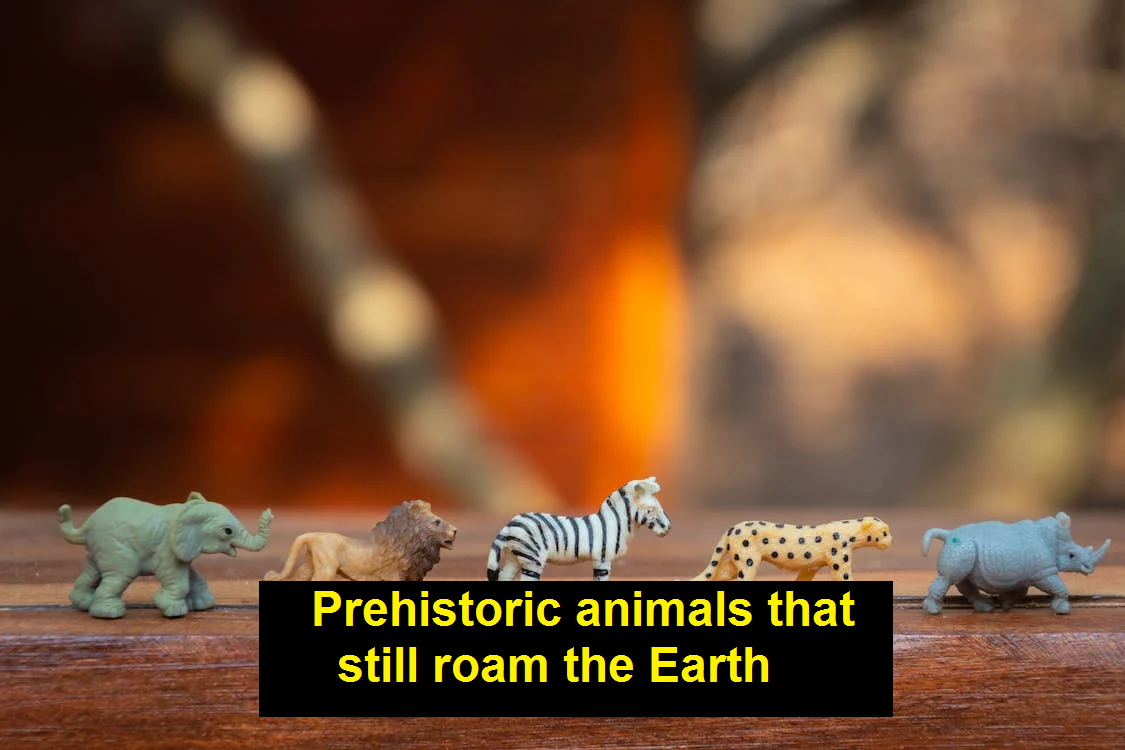Prehistoric animals that still roam the Earth : Since dinosaur bones were discovered, people have wondered what life would be like if prehistoric animals and humans coexisted. Who doesn’t love the idea of a gigantic lizard predator following them down the street? Only by waving at a passing Stegosaurus?
Prehistoric animals that still roam the Earth
1. Crocodiles
- You came for big, terrifying reptiles, right? Crocodiles are archosaurs (“ruling reptiles”) from the Early Triassic epoch (250 million years ago).
- The first crocodilian emerged 95 million years ago in the Late Cretaceous.
- Deinosuchus, a low-lying water-dwelling predator with a large snout, powerful tail, and many teeth, gave rise to modern crocodiles.
2. Cassowaries
- Based on its massive, claw-like feet, it’s easy to see why people assume this huge bird is related to velociraptors.
- The world’s third largest bird species has attacked people. These blue-necked critters live in northern Australia, Papua New Guinea, and Indonesia. Fun fact: they swim well and lay green eggs.
- Their casque—the leathery crest on their heads from which their name comes (“kasu” means horned in Papuan, while “weri” means head—may also resemble dinosaurs.
- Some argue the utility of this quiff-like extension. Scientists believe it reduces heat1 or helps the cassowary make its booming call2, which can reach frequencies too low for humans to hear.
3. Tuatara
- This extraordinary beast is the lone surviving member of an early Triassic genetic lineage.
- Between 240 million and 60 million years ago, Rhynchocephalia, which includes tuataras, reached full variety.
- They eat beetles, spiders, snails, and tiny birds, which they decapitate with their saw-like teeth, on New Zealand’s islands. Tuatara may live to 100 and thrive in cold weather.
4. Sharks
- Due of their age, calling sharks dinosaurs is insulting. In the Silurian epoch 450 million years ago, their ancestors became shark-like.
- They survived every major extinction event since Trilobites filled the seas. In contrast, dinosaurs are transient.
- With such a long ancestry, their makeup and appearance can vary greatly4. The shark family tree includes giants like Megalodon, like many of these species.
- Hammerhead sharks may seem weird, but their T-shaped heads are nothing compared to the Helicoprion’s dinner plate-sized, spiral-shaped teeth or the Stethacanthus’ anvil-shaped dorsal fin.
- Some sharks might glow in the dark, making Jaws a totally different film visually.ave survived major extinction events.
See Also:
There are 8 very tough dog breeds in the world
5. Lizards
- Lizards and dinosaurs developed differently despite their millions-year reptile ancestry and shared genetic characteristics like egg-laying.
- This is especially visible in their legs. Like horses and humans, your favorite dinosaurs have straight legs. Lizards and crocodiles have side-stretching legs.
- Although dinosaur means “terrible lizard,” lizards are only distantly related to archosaurs, having diverged from their common ancestor in the Late Triassic. Along with their snake cousins, squamates, they adapted and changed, creating over 10,000 living species and hundreds of extinct ones.
- Depending on their environment, lizards can swim, glide, scale trees and ceilings, climb vertical surfaces, walk on water, and lose and regrow their tails. Their survival through many major extinction events is likely due to their extraordinary flexibility.
If you like this article about Prehistoric animals that still roam the Earth then you can share this info with your loved ones.





Leave a Reply